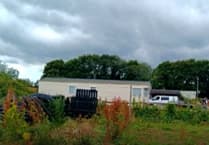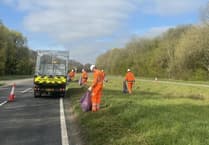THE COUNTRYSIDE surrounding Whitehill & Bordon contains some of the world’s rarest heathlands habitats, supporting amazing wildlife including the beautiful sand lizard, the silver-studded blue butterfly and several rare birds. These heaths are, in fact, so special that they have protected status.
And now, thanks to a collaboration between East Hampshire District Council, Whitehill Town Council and the South Downs National Park’s Heathlands Reunited Team, the importance of these precious habitats is to be enhanced and celebrated.
Two new rangers, Lisa Sharp and Mark McManus, will soon become familiar, friendly faces to visitors at Bramshott & Ludshott Commons, Broxhead Common, Kingsley Common, Longmoor Inclosure and Woolmer Forest – as well as the Shortheath Common Special Area of Conservation (SAC).
Councillor Tina Strickland, from Whitehill Town Council, said: "We’re delighted that there will be a team of friendly faces on the commons, bringing people together to care for the heaths and hopefully reaching new audiences who might not be aware of how fragile these protected habitats are.”
Olivia French, engagement officer for the Heathlands Reunited project, said: “These heaths are a habitat as rare as the rainforest and we see this as a wonderful opportunity to help more people learn about how special these sites are and simple things we can all do to help care for them”
Cllr Phillip Davies, from East Hampshire District Council, said: “The heaths are enjoyed by so many people for recreation and appreciating nature, however we need to remember that they are extremely important ecological sites and we have a duty to protect them.
“During the recent lockdown, our local natural spaces have become a lifeline for many and these seasonal rangers will help people to appreciate and learn about these spaces for generations to come.”
The Wealden Heath SPA is what remains of a vast lowland heathland habitat that once stretched across Hampshire and Sussex and is now confined to a few isolated pockets. The sites are all home to three protected bird species: the Dartford warbler, the European nightjar and the woodlark.
These birds use the cover of the heather and gorse to build nests and raise their young between March and September. They can be vulnerable to disturbance by inquisitive dogs, so dog walkers are asked to stick to paths and keep dogs on leads and out of vegetation during this time.
If you are interested in linking up with the seasonal engagement ranger team and are local to Whitehill & Bordon and the surrounding area, email [email protected] to register your interest.





Comments
This article has no comments yet. Be the first to leave a comment.